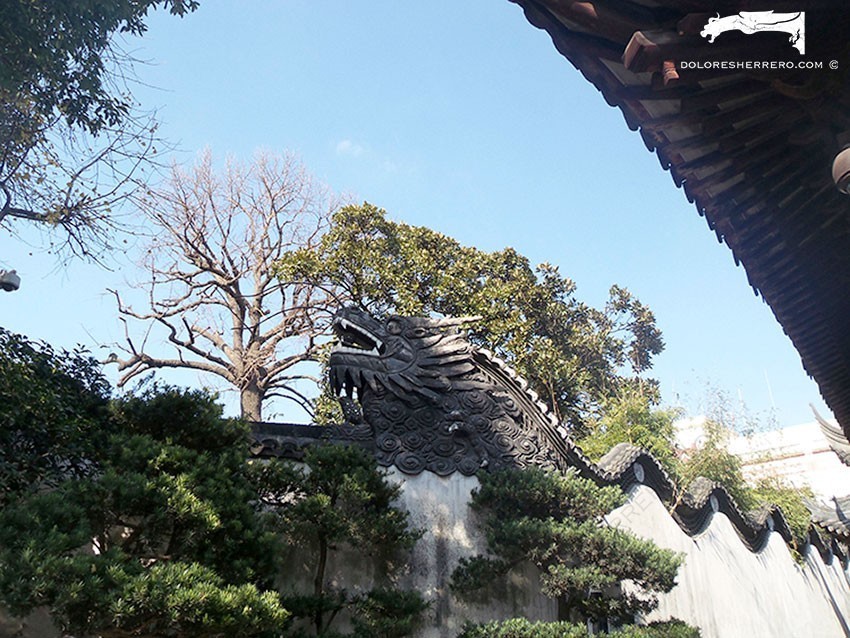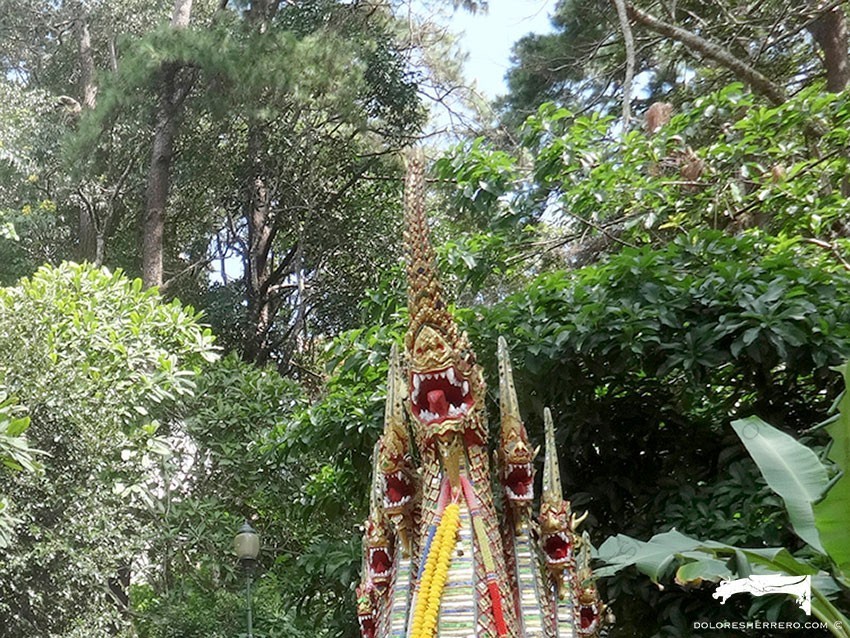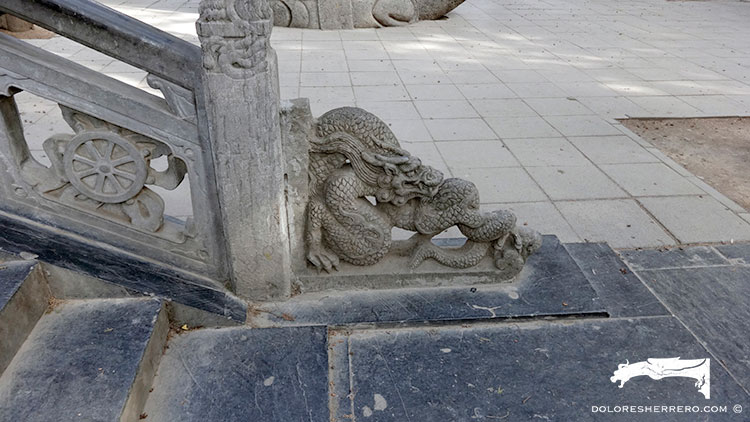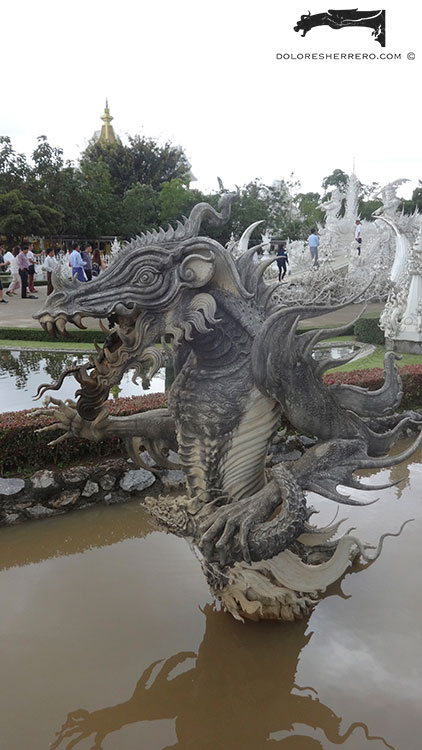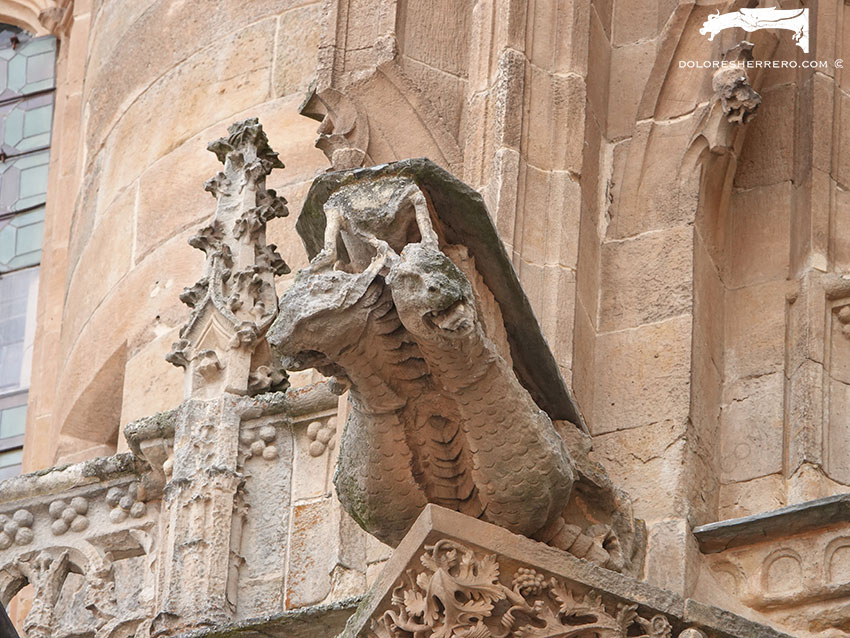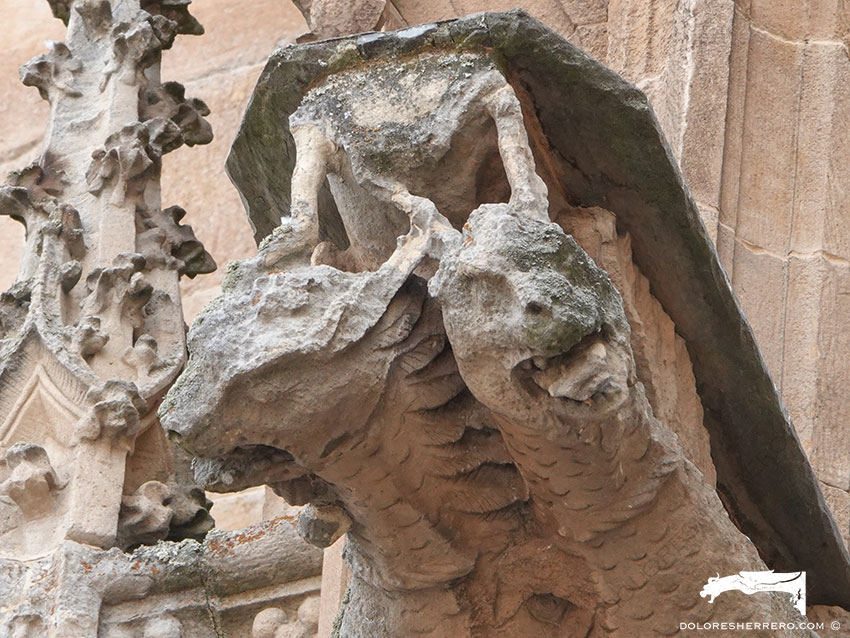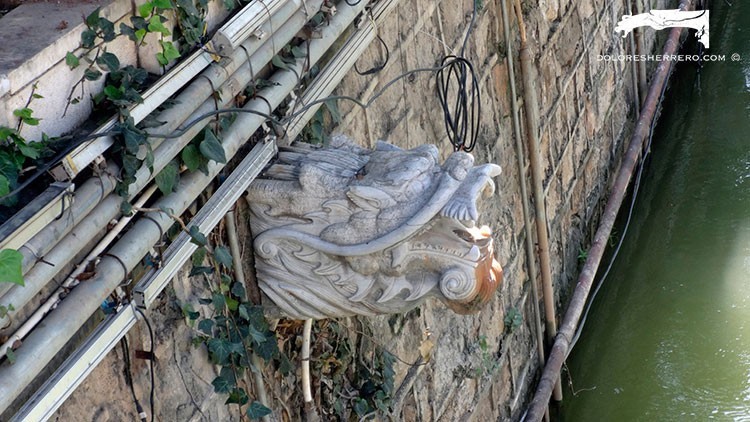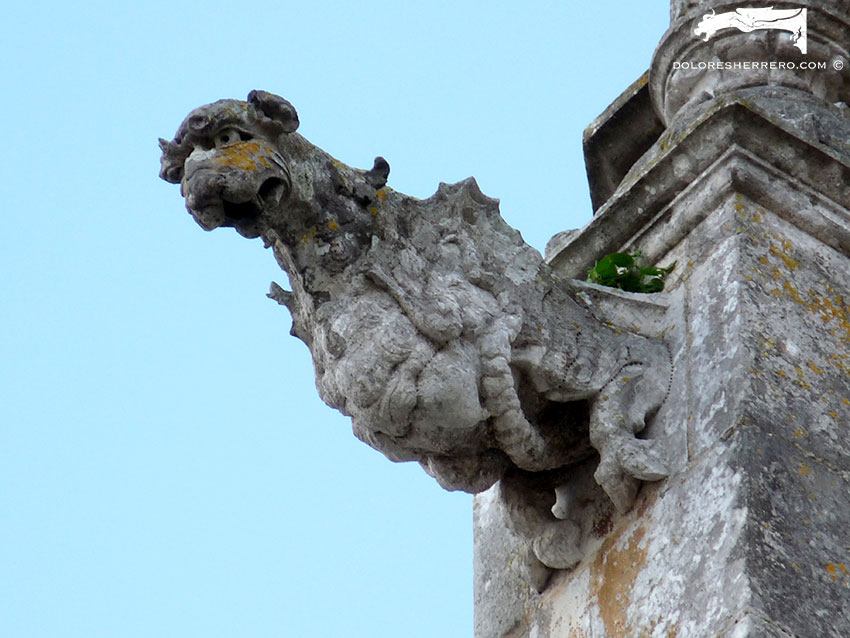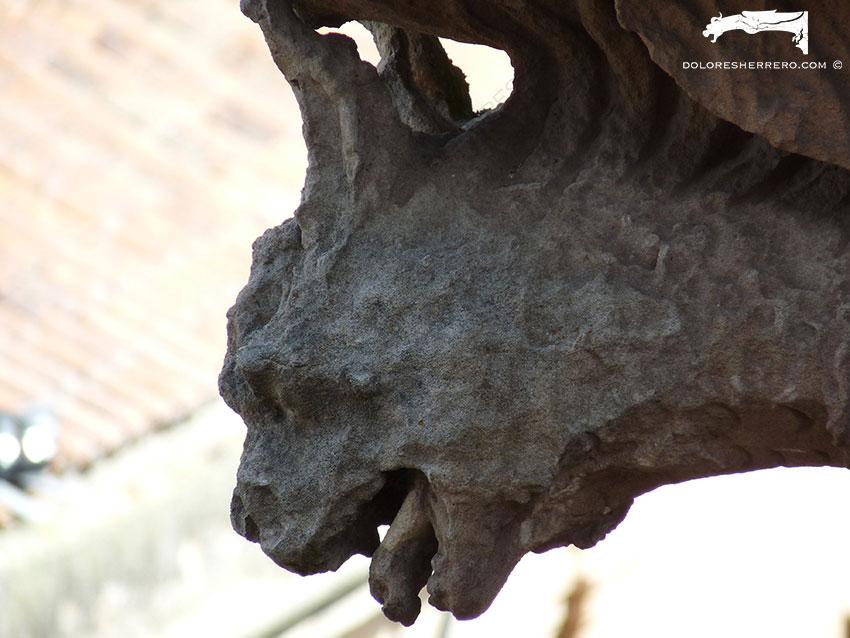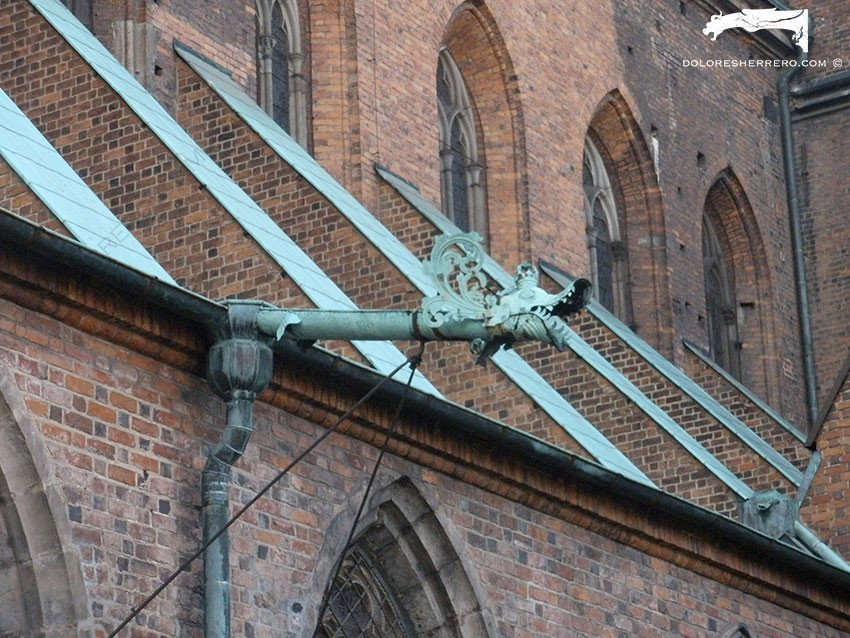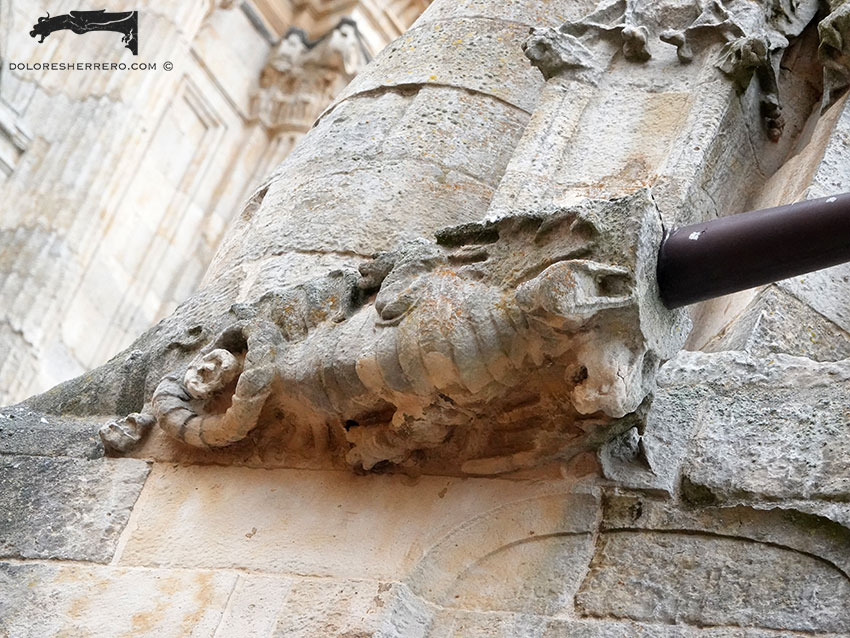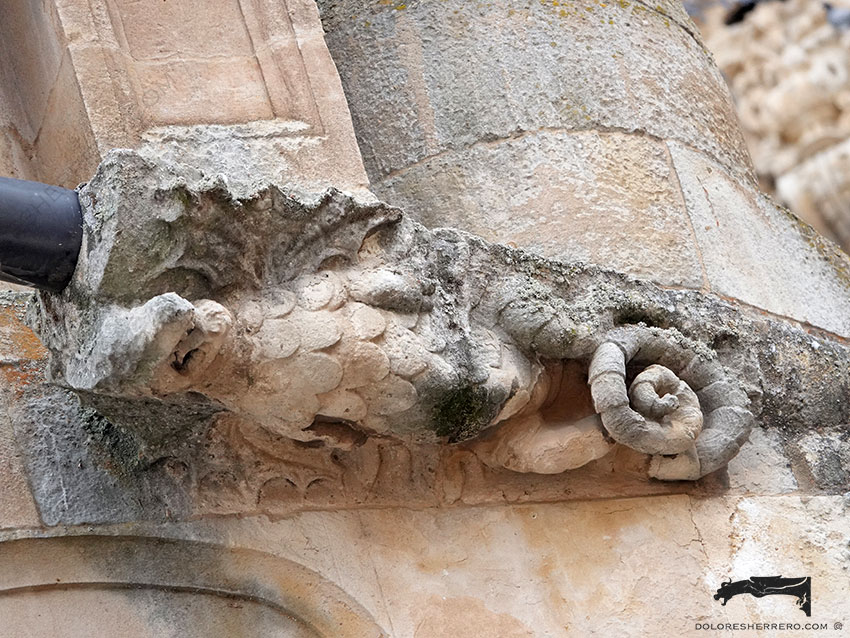Both in the field work we did for my thesis and on other trips in search of gargoyles, from time to time we’ve been lucky enough to come across a few images of the dragon gargoyle.
Today I invite you to venture with me into the world of one of the most well-known, significant, attractive and magical creatures in mythology: the dragon.
It has numerous portrayals and a fascinating symbolism.
- Yuyuan Gardens (Shanghai, China)
- Doi Suthep Temple (Chiang Mai, Thailand)
- Shaolin Monastery (Dengfeng, China)
- Yuyuan Gardens (Shanghai, China)
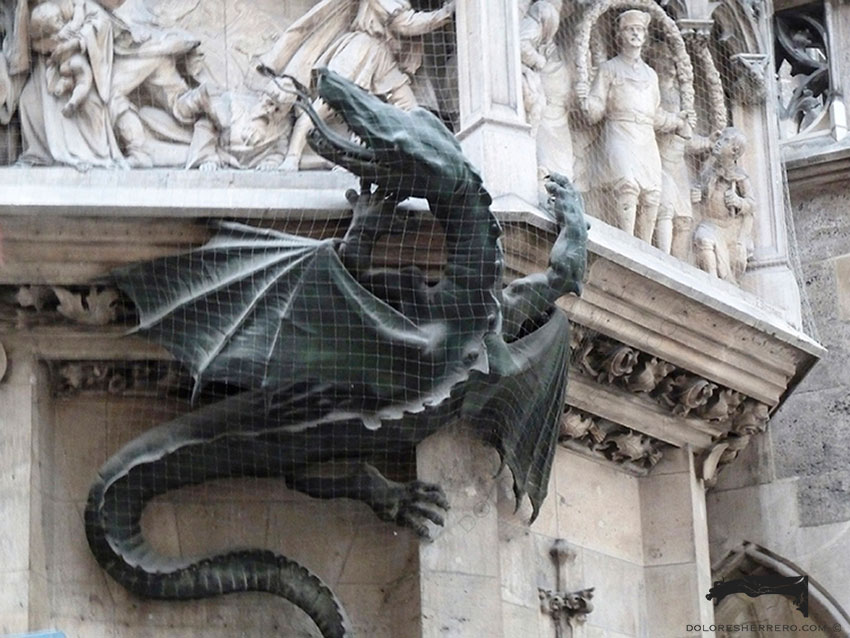
New City Hall in Munich (Germany)
As we already said when we discussed the various types of gargoyles, sources on the image and symbolism of the dragon date back to texts written in Antiquity, bestiaries, works of mythology, tradition, superstition, etc.
The first depiction of the dragon seems to have appeared in Sumer (Mesopotamia). In the Louvre there is a libation vessel from Tello (ancient Girsu, in the Sumerian state of Lagash) dating from 2150 B.C. showing a winged monster with a serpent’s head and a diadem with horns, which could be the first depiction of a dragon, possibly symbolising royal strength.
Some of the characteristics attributed to the dragon are of being a strong, watchful creature with incredibly sharp eyesight. This extraordinary strength meant it was used to guard temples, oracles, virgins and treasures. For pagans it was a symbol of prudence, wisdom and prophecy. The Persians and Parthians carried lions and dragons in front of their armies to intimidate their enemies. Roman legions used the dragon as their emblem, as did the Vikings, who placed them in a prominent position on the prow of their ships. In Achaemenid Persia, you find dragons combating the forces of evil.
In China, the dragon is a creature of good omen, a symbol of strength, wisdom, prosperity and perfection, and linked to the beneficial values of yang (male principle) compared to yin (female principle). The Ming dynasty (1368-1644) spread the image of the dragon in the decorative arts (china, fabrics and tapestries, weapons, clothing, musical instruments, etc.), which made it even more widespread.
According to Baltrušaitis, dragons were also used in Islam around the same period (fables of Ibn Buhtyašū from 1291, dragons in illustrations of the Mongol kingdom…). The Far East is clearly a land of dragons.
- Chiang Mai Temple (Thailand)
- White Temple (Chiang Rai, Thailand)
Other cultures also have portrayals of dragons. In Black Africa, protective spirits usually take the form of a serpent, and the same is true for New Zealand and Indonesia. In Sumatra, the singa (a serpent with horns, a horse’s neck and a wavy tongue) protects homes and the dead if shown on a tombstone. And Mexico has an Aztec deity, the Quetzalcoatl, the feathered serpent (winged dragon).
Greek mythology also has its own dragon-like figures: the Gorgons, Echidna, Typhon, the Hydra of Lerna, and so on. In the Greco-Roman world, the dragon was linked to the concept of the hero who overcomes the monster (Perseus, Jason, Hercules, Cadmus).
Christian iconography linked the dragon to the idea of evil and the devil, and featured not only dragons but also other creatures related to the serpent, which as you know is the symbol of the devil in Genesis, a meaning that could sometimes also be applied to the dragon gargoyle.
The dragon of Christian art comes from an Oriental model (serpent with scaly feet, sometimes with a spiny dorsal crest or serrated teeth), and from a Celtic model (the serpent with the lamb’s head that accompanies the Celtic god Cernunnos, shown on a silver cauldron found in Gundestrup and dating from the 1st century B.C. is a kind of dragon).
Biographies of the saints contain legends about saints conquering dragons (evil), like St. George, St. Marcellus, St. Martha, St. Radegunda, St. André of Aix-en-Provence, St. Armentarius, etc.
The huge number of dire prophecies that emerged around the year one thousand, according to the accounts by St. Medardus of Soissons (5th-6th century) and the monk Sigebert of Gembloux (11th-12th century), include the appearance of a celestial dragon.
In his Etimologies, St. Isidore says that the dragon is the biggest of all animals that inhabit the earth. The Greeks call it drakôn, from which the Latin word draco is derived. He tells us that it has a crest, a small mouth and narrow channels through which it breathes and sticks its tongue out. But its strength does not lie in its mouth, but rather in its whip-like tail.
The image of the dragon evolved over time. From a simple serpent with no wings or feet in the Romanesque period to the impressive Gothic dragon, with scales, crest and membranous wings. In the 13th century especially, dragons had bat-like wings and serrated crests.
The dragon would go on to be portrayed in the Renaissance and would be a habitual motif of the grutesco. The medieval type of dragon continues, with formal changes but the same symbolism.
Endless depictions throughout the centuries that we see in sculpture, painting, the dragon gargoyle… The image of the dragon appears in countless places and countries. But we don’t only see it portrayed in sculpture, painting or the decorative arts; it also appears in all the arts of our time: film, illustration, literature, animation, and much more.
And always reaching far beyond the limits of our imagination and fantasy.
Gargoyles
- Kunming (Yunnan, China)
- Kunming (Yunnan, China)
- Wawel Cathedral (Krakow, Poland)
- Batalha Monastery (Portugal)
- Salamanca Cathedral (Spain)
- Wroclaw (Poland)
- Salamanca Cathedral (Spain)
- Salamanca Cathedral (Spain)
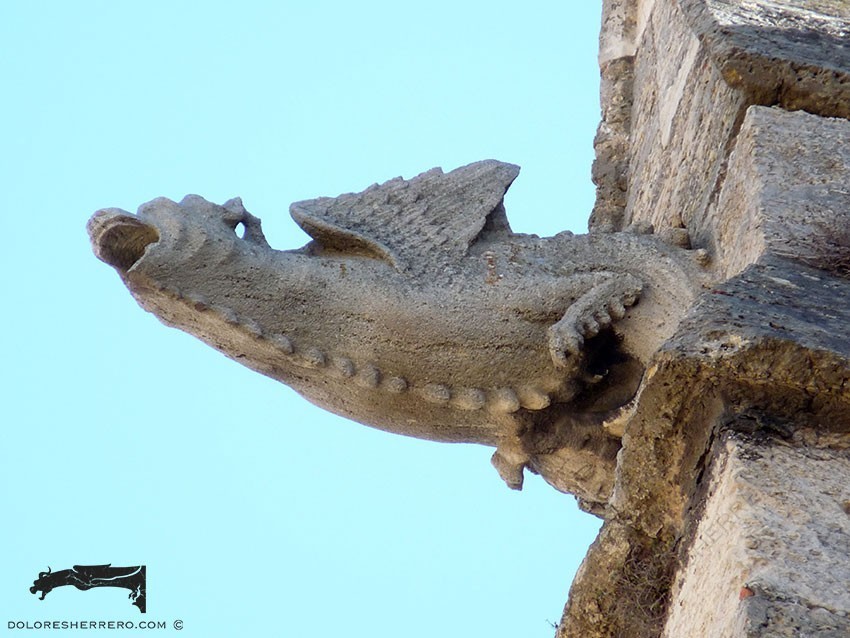
Narbonne Cathedral (France)
Bibliography consulted
BALTRUŠAITIS, J., La Edad Media fantástica. Antigüedades y exotismos en el arte gótico, Madrid, Ediciones Cátedra, S. A., 1987.
DE PINEDO, DOM. R., El simbolismo en la escultura medieval española, Madrid, Espasa-Calpe, S. A., 1930.
DELACAMPAGNE, A. y C., Animales extraños y fabulosos. Un bestiario fantástico en el arte, Madrid, Editorial Casariego, 2005.
FOCILLON, H., El año mil, Madrid, Alianza Editorial S. A., 1966.
GARCÍA ÁLVAREZ, C., El simbolismo del grutesco renacentista, Universidad de León. Secretariado de Publicaciones, 2001.
GRIVOT, D., Le diable dans la cathedrale, Paris, Editions Morel, 1960.
MATEO GÓMEZ, I., Temas profanos en la escultura gótica española. Las sillerías de coro, Madrid, Consejo Superior de Investigaciones Científicas. Instituto Diego Velázquez, 1979.
SAN ISIDORO DE SEVILLA, Etimologías, II (Libros XI-XX), Madrid, Biblioteca de Autores Cristianos. Editorial Católica, S. A., 1982.

Doctor of Art History and researcher specializing in the study of gargoyles.
I am Dolores Herrero Ferrio, and my thesis, “An Approach to the Study of Gargoyles of Gothic Cathedrals in Castilla and León”, is dedicated to the study of these fascinating figures.
If you like gargoyles and art history, you will also enjoy my book, “The Gargoyle and Its Iconography,” a book I have written with great care for those interested in the world of gargoyles.
I have created my own Encyclopedia of Gargoyles, a Gargopedia to share with you, where you will discover all the secrets and wonders of these enigmatic sculptures.
I hope you enjoy this Gargopedia as much as I have enjoyed creating it, and remember that each gargoyle has a story to tell, and here you will discover them all.
